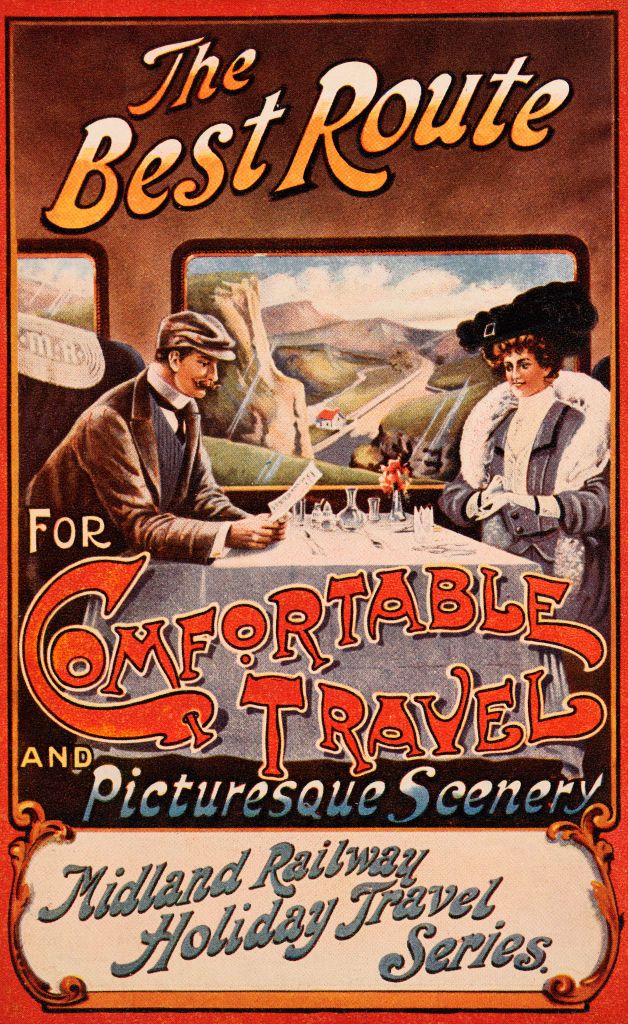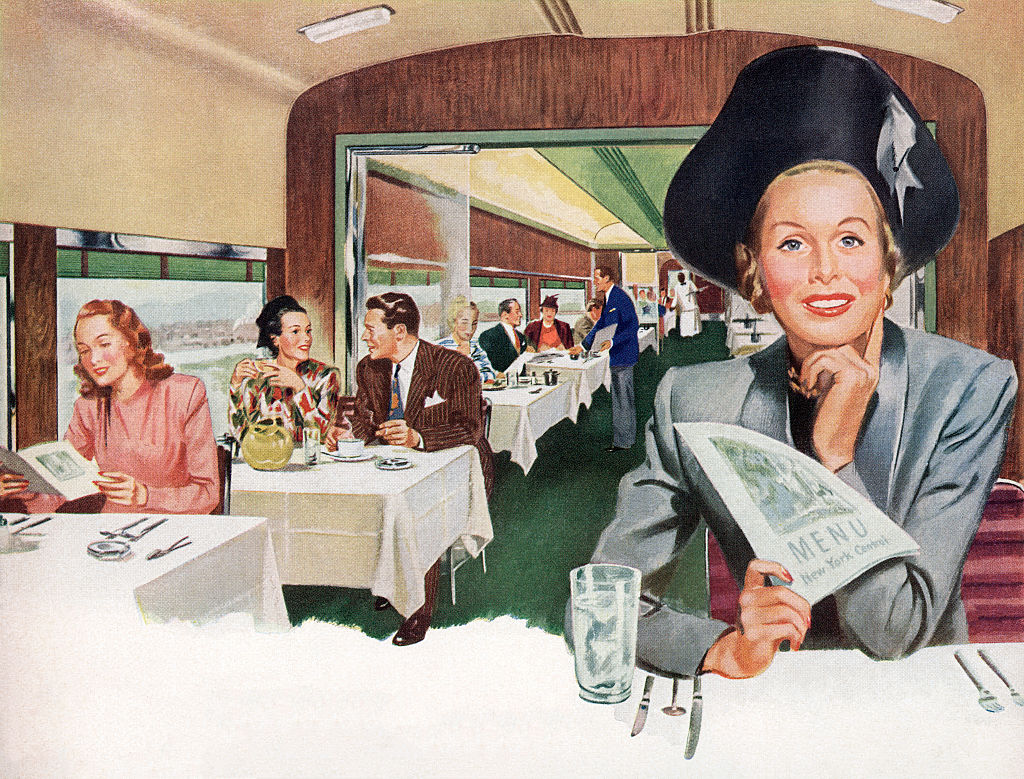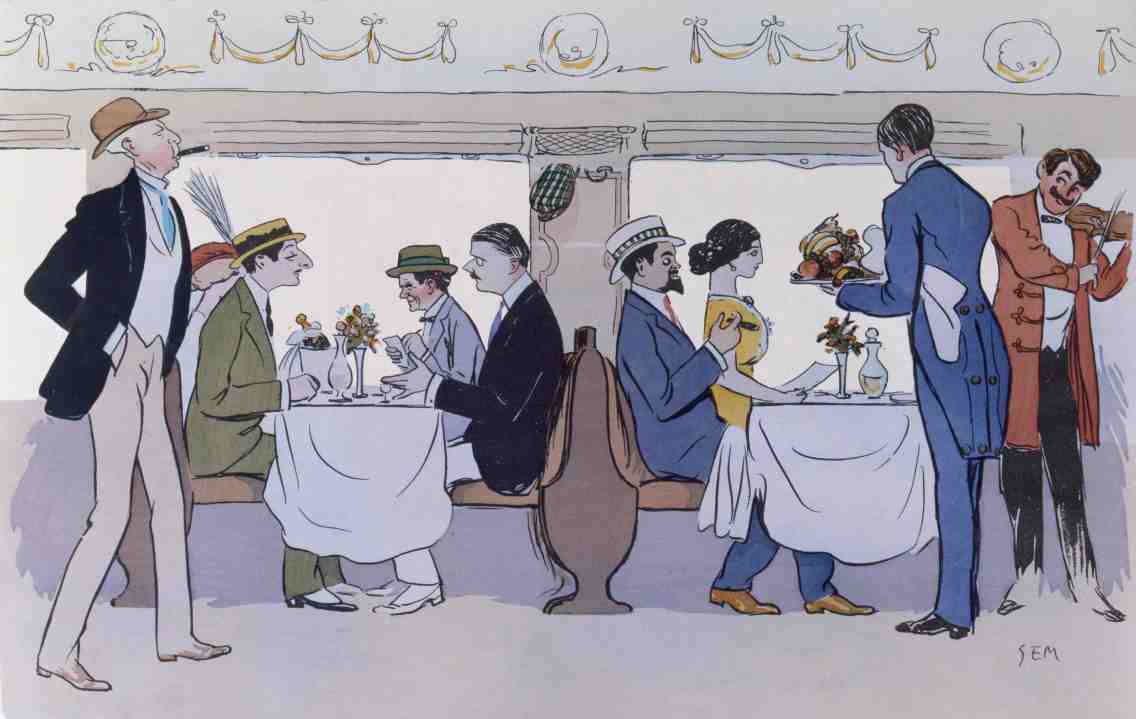It’s six o’clock and you’ve fought your way on to a train at a major London terminus. The carriage is rammed – heavily pregnant women, the stricken and the young stand in the corridors like it’s A&E – and everywhere people are diving into takeaways. The pungent egg and cress sandwich from Pret is bursting at the seams next to you; on the other side of the table there’s a lout blasting music from his phone speaker and eating the smelliest katsu curry money can buy. A pasty is crumbling down the front of a businessman going to fat on the far side of the aisle; another tubby businessman belches peanuts and is moving on to his third gin and slimline tonic; and a Big Mac and fries is disappearing into the space between a pair of headphones opposite and will repeat all the way to Chester.
Amid the coughing, the incessant phone-ringing and the bovine moaning of the standing you realise that were Dante alive today he would add another concentric circle of hell labelled ‘West Coast Main Line’. But frankly it’s the same story on whatever intercity service you choose at this time of night. And the worst part? Chances are that – if your stomach has survived the assault on the senses – you’re hungry too. But who wants to eat in such an intimate fashion, being gawped at like a zoo animal and surrounded by slurping sound of sloppy mastication?
Yet it wasn’t always this way. Once upon a time, when gloves came in proper sizes rather than simply small, medium and gorilla, there were these things called restaurant cars on trains. You’ll have seen them in the old films; there were tables, tablecloths, waiters and cutlery. There was also, I imagine, civility.

And then there wasn’t. It has been reported that the last restaurant car was withdrawn from service in May 2011 – on the King’s Cross to Leeds line. In fact there is one that still survives – when strikes allow, Great Western Rail offers a Pullman dining car on certain services (£37.50 for three courses), and it looks lovely. But the overwhelming majority of us are left at the mercy of on-board takeaway torture.
So here’s a thought. Why not bring back the railway restaurant car? We are told that more people are using railways than ever. We also know that despite great efforts, trains are really no faster than they were 50 years ago – meaning there is still plenty of time to fit in a meal on a journey between most major cities. The number of people travelling during mealtimes has not reduced, and we live in a society far, far more obsessed with food (and if you look at the obesity figures, by overeating, too). So surely you don’t need an MBA to recognise the business case?
If you have to spend several hours on a train, what could be better than doing so while being served the finest food the world? It’s simply Michelin stars on the move. And when you’re dining aboard the gastronomic express you don’t care if the train is slightly late – you simply order another course from a tasting menu, one that takes you from Euston to culinary heaven via Liverpool Lime Street.
When you’re aboard the gastronomic express you don’t care if the train is slightly late – you simply order another course from a tasting menu, one that takes you from Euston to culinary heaven via Liverpool Lime Street
Imagine it: truly fine dining at speed. What would you go for? Kedgeree at 140 miles per hour, perhaps washed down with a chilled chablis or glass of Ridgeview sparkling? Kick off with steak tartar or lobster bisque at Watford Junction, moving on to beef wellington from a sustainable, individually named herd of vegan Dexters, followed by the artisanal cheeseboard after Crewe Junction? Then port – and all that before you step off the train at Manchester Piccadilly, feeling like a god.
We have the routes in abundance, thanks to the Victorians; we have the passengers; and we have some of the greatest chefs in the world. With already dozens of restaurants to their name why wouldn’t someone like Heston Blumenthal, Jamie Oliver or Angela Hartnett add what could be the finest restaurant car civilisation has ever known to their portfolios? Who wouldn’t want to try out Gordon Ramsay’s dining car on the London to Edinburgh line?
We simply need the rolling stock and the will to do something impressive and not irretrievably cheap. Is it feasible? Yes. Would it bring joy and pride to our locomotive life? Yes, it would. With our chefs and gastronomic passion we could have a dining experience that would be the envy of the world. It would make Emmanuel Macron sick – not from the erratic motion of the carriage, but with jealousy. Yes Mr Macron, your TGVs might be faster, more 1980s-looking and probably more efficient, but our food rocks. Literally, perhaps, if you’re rattling on the through Cambridgeshire at 120mph on the East Coast Main Line.

The Eurostar, where dining currently takes place on airline-style trays, could get involved too. You could do the best of British going one way, and the elite French gastronomy on the return leg. Ooh la la! From the entente cordiale to salmon en croute in the blink of an eye.
The return of restaurant cars would also allow for the exploitation of another exciting untapped opportunity – a train version of MasterChef, with Gregg Wallace, Marcus Wareing and others stuffing their faces en route to a variety of provincial railway stations. ‘Tonight Gregg, I’m pairing sous vide duck a l’orange with truffle jus and parmesan coulis with the stopping service to Littlehampton. Pudding will be served after the train divides at Burgess Hill…’
So here’s my advice for railway workers: don’t go on strike, go on MasterChef. Once we have dining cars back, you can be a star too, and passengers will fall in love with rail all over again. It’s time to let the belt – not the train – take the strain, and put food at the heart of the great British railway experience.







Comments